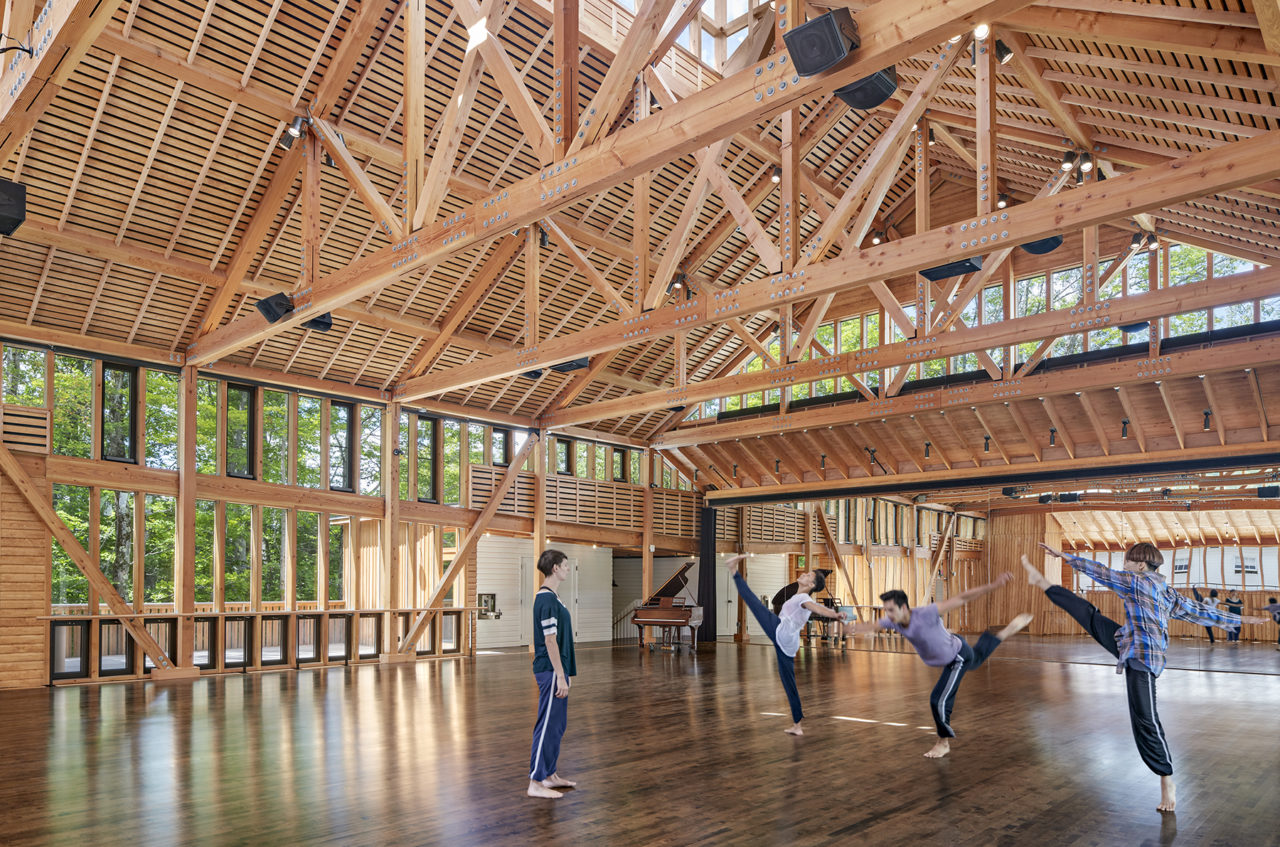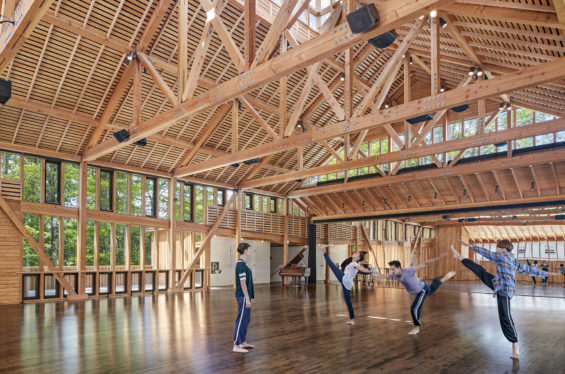Dance, Dance Evolution: Jacob’s Pillow Brings Dance off the Mountain with Its New Strategic Plan


Trainor Dance at Jacob’s Pillow Dance Festival; photo Christopher Duggan.
For an 85-year-old, Jacob’s Pillow is looking awfully good.
This summer, the country’s longest-running dance festival announced a new strategic plan that will change the face of the organization, as well as shake up many of its decades-old habits. Dubbed Vision ’22 for its five-year range, the plan charts a roadmap for turning the world-renowned summer festival in Becket into a year-round center for dance.
For Pamela Tatge, the Pillow’s new director, Vision ’22 was the next logical step in the venerable institution’s evolution. “We’re operating from such a wonderful position of strength,” she says. “We have an endowment. We have a loyal following. We have artists from around the world who ant to work here. The question became, How can we continue to build our audience, steward this amazing institution, and serve our field for the next five years?”
Vision ’22 was originally brainstormed in a board retreat under former artistic director Ella Baff. In order to ensure that outside viewpoints were represented, all artists from the 2016 festival season—more than 50, from both the United States and abroad—were invited to sound off as a focus group on the initial ideas, and their own needs as artists. The Jacob’s Pillow team also brought in leaders from Dance USA and the National Endowment for the Arts, to discuss the organization’s role in the dance landscape. Finally, the Pillow’s 220 acres and 36 buildings underwent a rigorous facilities audit.
Several key issues were targeted. First, some facilities needed to be built, winterized, or upgraded. For example, in order to match the caliber of dancers who come to study at the School at Jacobs Pillow—just 100 of the 3,000 students who apply each year are accepted—the staff knew they had to provide a training space that far exceeds the original circa-1950s building, with its uneven floors, low ceilings, and lack of air-conditioning. The new 7,373-square-foot, $5.5 million Perles Family Studio features a dance floor almost double the size of the original, as well as climate control. There’s also a separate, glass-enclosed space for spectators to view rehearsals, without interrupting performers and faculty, plus an area for seating on days when inclement weather forces Inside/Out performances indoors.

The Perles Family Studio at Jacob’s Pillow; photo by Robert Benson.
The Pillow also needed additional housing for the horde of interns and seasonal who help keep the organization running each summer. And the main performance space, the Ted Shawn Theater, needed structural updates and enhanced ventilation. All of these upgrades raised a question: If the spaces were built, enhanced, and winterized, could they be used to enrich the campus post-festival?
Enter the next step in Vision ’22: strengthening and expanding the Pillow’s artistic programming. Next year, Jacob’s Pillow will add a summer program for emerging choreographers, and is planning a slate of year-round meetings, workshops, and conferences for industry professionals. Building on a pilot program from the 2016 to 2017 season, the institution has launched the Pillow Lab, a year-round facility for dance research and development. Each year, 10 to 15 choreographers will be brought in to study, practice, and experiment, as well as try out a variety of technical elements in their work.
Tatge explains, “We want to meet artists where they are. If they just want to research in the archives or have a space to dream, they can do that. If they want to bring their companies, or want technical support before they’re ready to mount a premiere, we can do that, too.”
John Heginbotham, who first came to the Pillow as a student in 1991 and later as a lead dancer with Mark Morris Group, was one of the choreographers in the pilot program, and had no hesitation about being in the notoriously volatile Berkshires in the off-season. “There’s something really magical about being at the Pillow in the fall and even the winter,” he says. “It’s beautiful and has a more intimate feeling. The artists are living and working on the campus. It’s a pure period of time to concentrate on what the work calls for.”
This ability to focus on the work comes courtesy not just of a studio to practice in 24 hours a day, 7 days a week, but also a stipend to support the artist, plus access to technical resources like staging, sound, and multimedia, and a crew to assist with it. For Heginbotham, this meant invaluable experimentation with the balance between lighting and projection, both of which are impossible to explore theoretically, and are used extensively in Dance Heginbotham’s highly visual, nonlinear show The Principles of Uncertainty, a collaboration with illustrator Maira Kalman that premiered at the Pillow in August.

The Perles Family Studio, designed by Flansburgh Architects; photo by Robert Benson.
The residency also gave Heginbotham the opportunity to bring in an outside consultant to offer feedback on the work in progress. Of the input from Daniel Fish, a highly regarded New York theater director, Heginbotham says, “His feedback ended up having a very large impact. He solved a couple of big problems for us, just by telling us what he saw and didn’t see. He was a very good and generous coach.”
Because generosity has long been part of Jacob’s Pillow, the staff is actively working on boosting civic leadership and community engagement. “We’re known nationally and internationally, but no so well locally and regionally,” Tatge notes. “We’ve worked hard to develop a reputation for our festival, but now we can think of ourselves as a citizen of Berkshire County. We want to take dance off the mountain and into communities.”
To foster inclusion and complement the festival’s long-running free Inside/Out performances, the organization debuted the Pittsfield-Pillow Express, complimentary round-trip bus transportation to Saturday performances, including Inside/Out and discounted matinees in the main theaters (any student who is enrolled in a dance school in the area can also get tickets for just $10). They also brought dance directly into the heart of Pittsfield with professional performances at Third Thursday, and plan to expand their elementary school Curriculum in Motion program into even more venues. “In the next five years, we want to be in every elementary school in the Berkshires,” Tatge says.
While this degree of change is normally a painstakingly slow process, at Jacob’s Pillow, there’s no time like the present. “The Pillow keeps evolving,” says Heginbotham. “The entire staff is excited about the history and legacy of the Pillow. Still, it’s not a conservatory; it celebrates its history, but it keeps pushing for and presenting the newest work. You have the sense that you’re part of this incredible lineage of dancers and choreographers from different eras and all over the world.”
An abbreviated version of this article first appeared in the October 2017 issue of Berkshire HomeStyle.